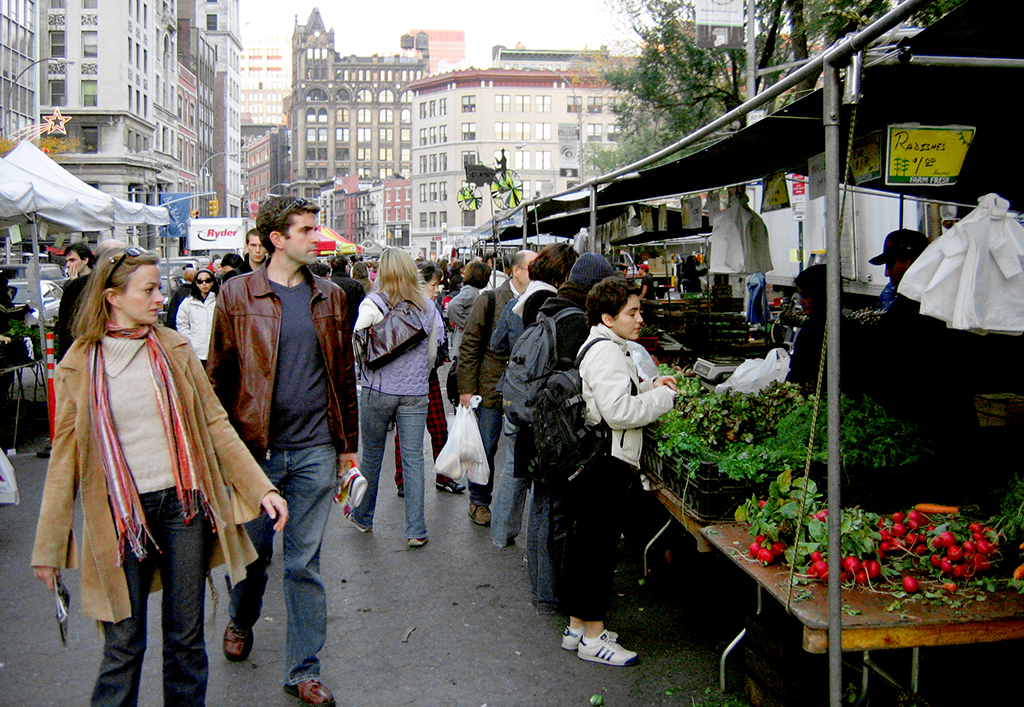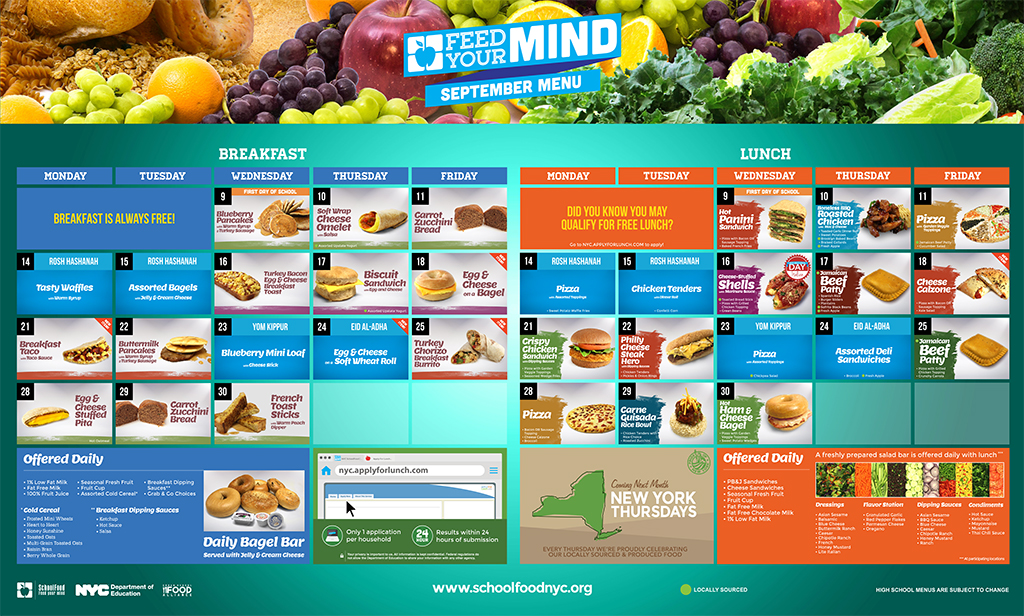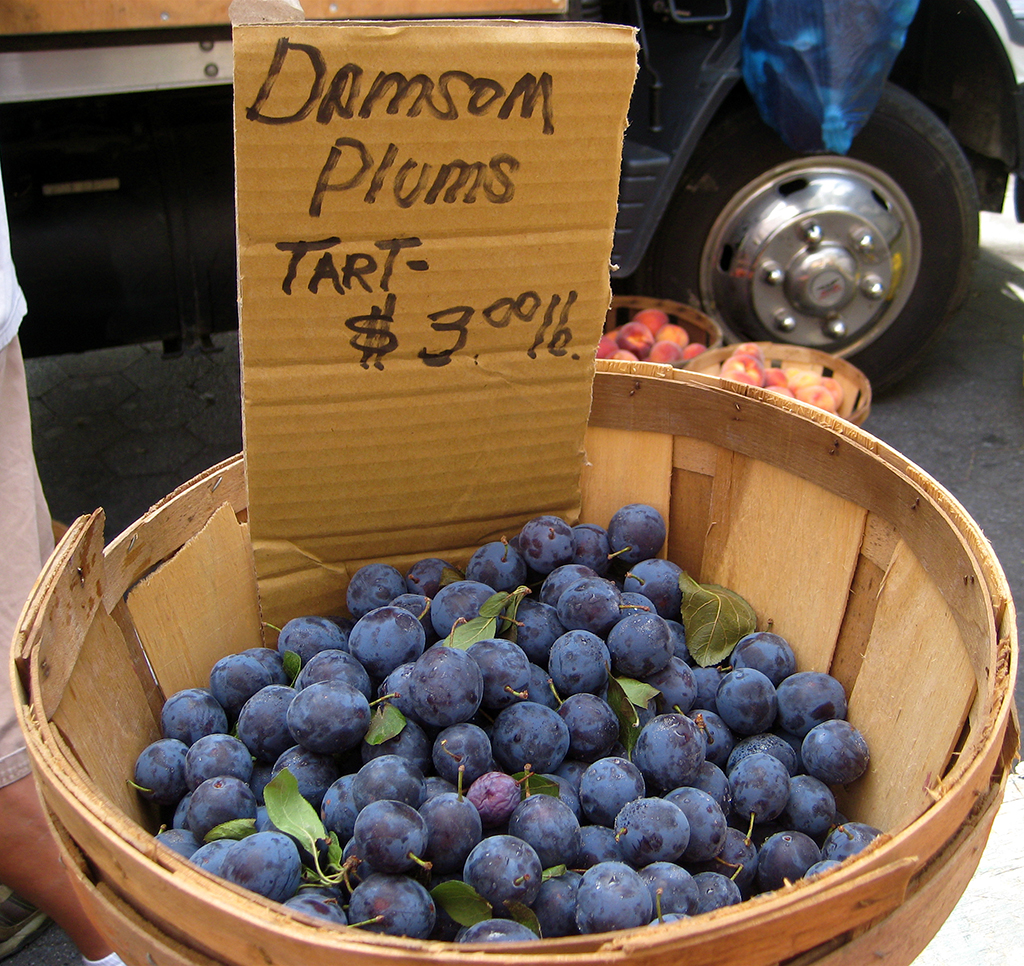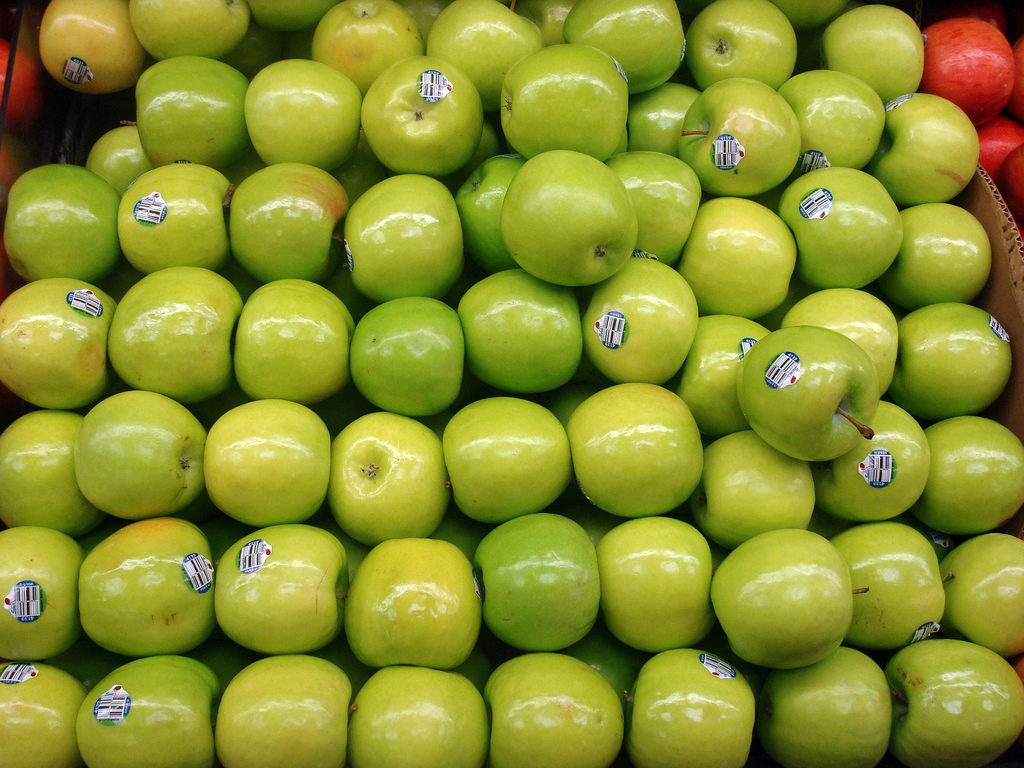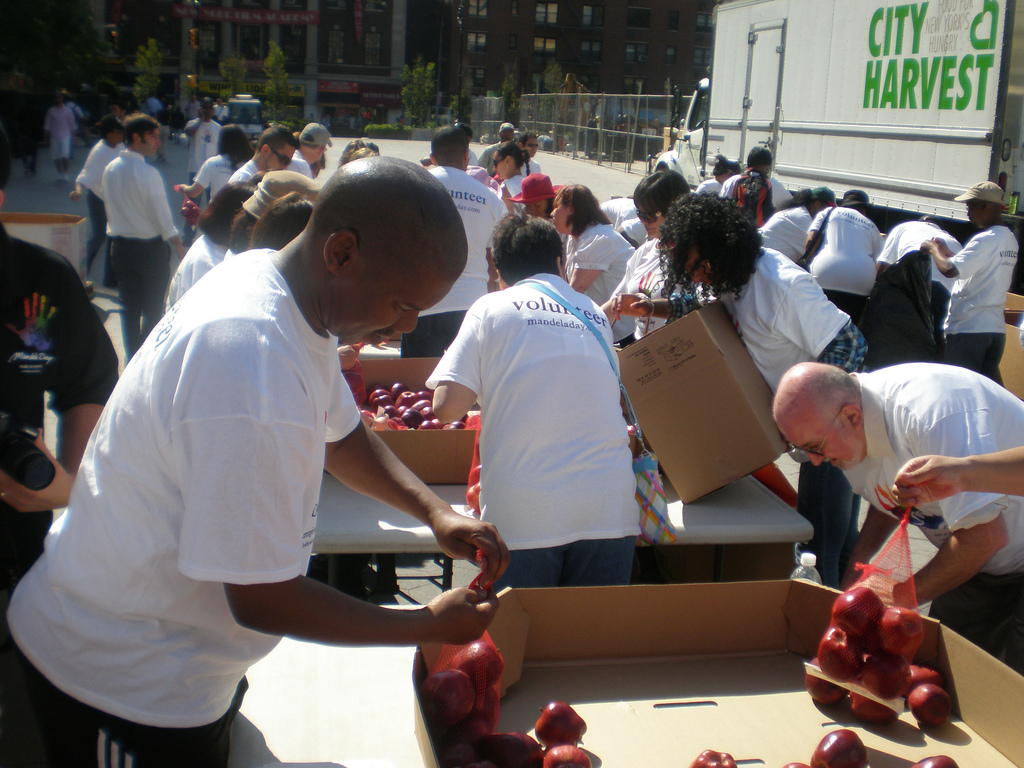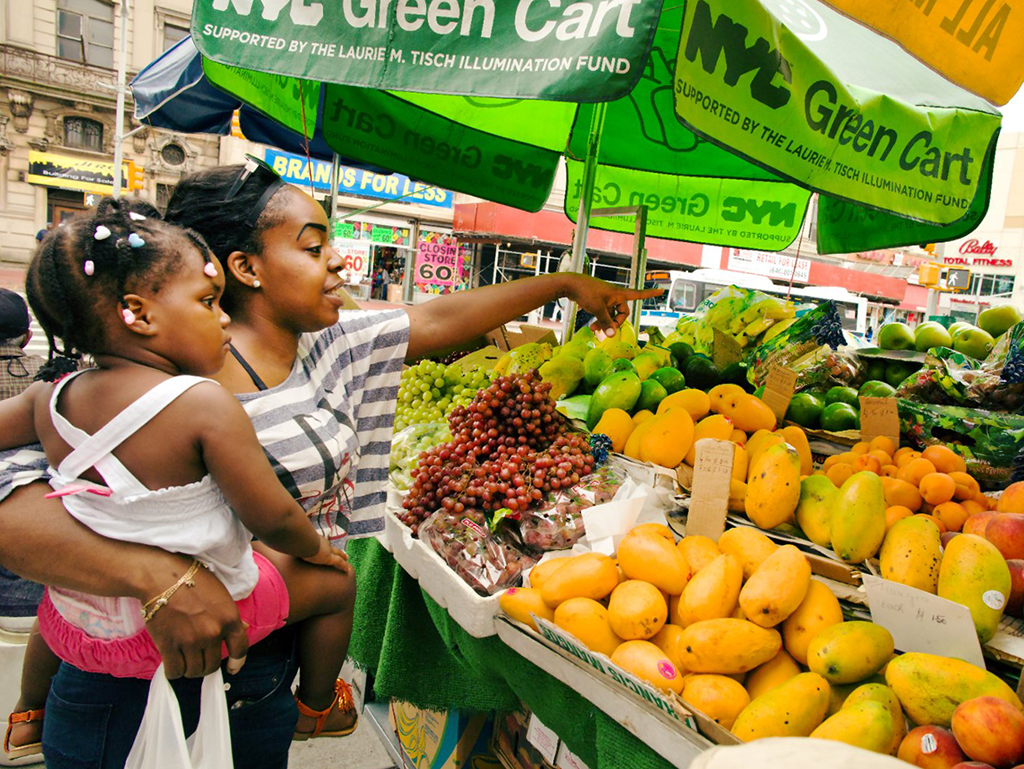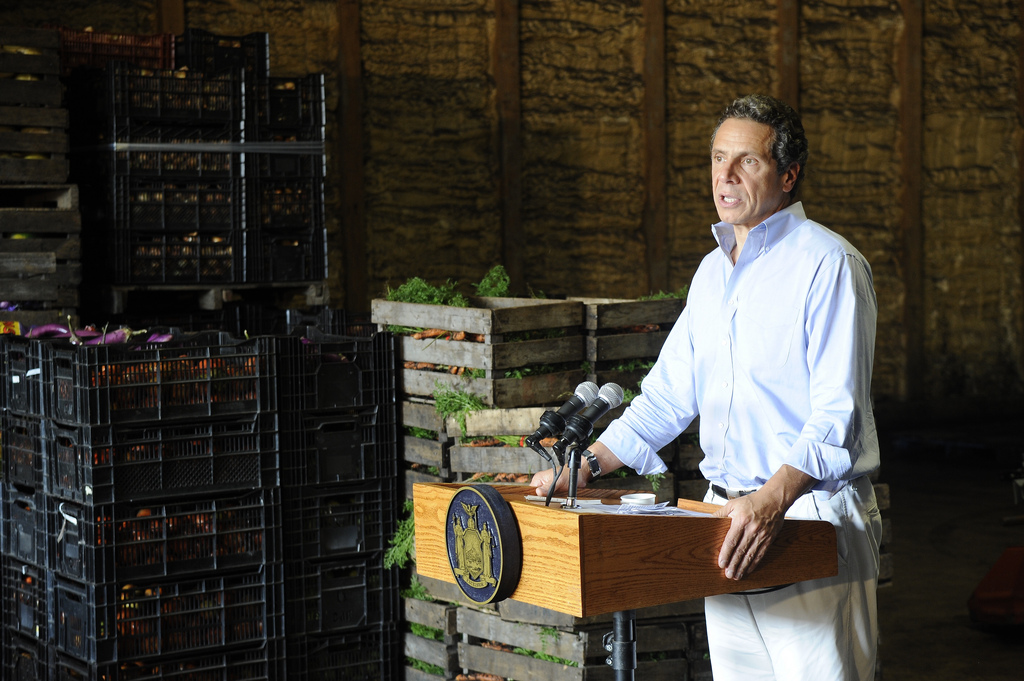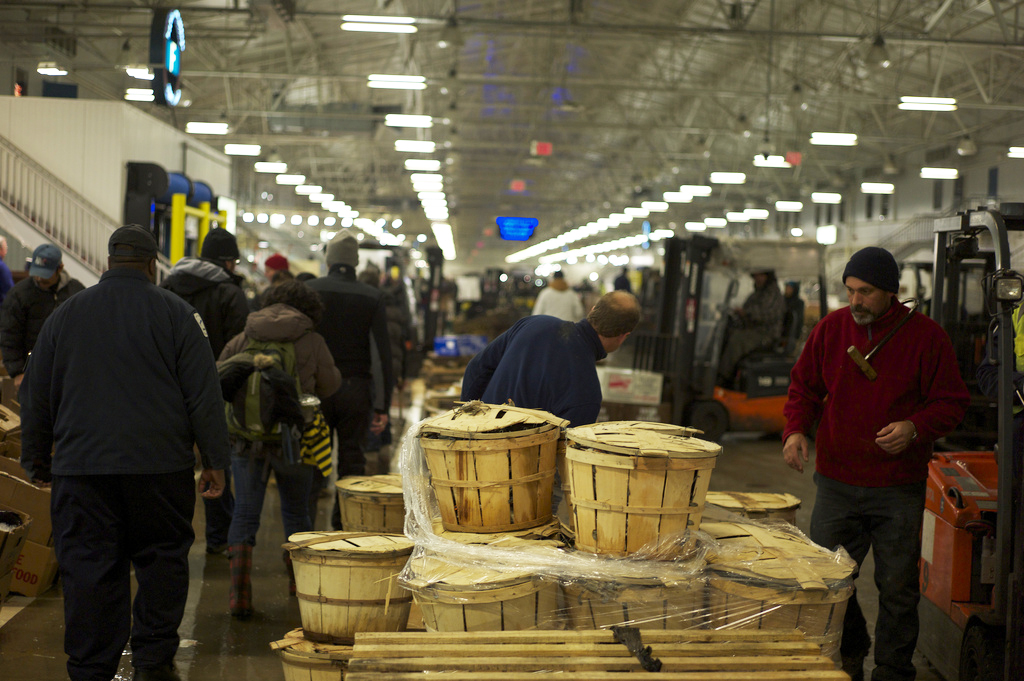
We are celebrating 15 years — and counting — of stories that are deeply researched and deeply felt, that build a historical record of what the city has been.
We are celebrating 15 years — and counting — of stories that are deeply researched and deeply felt, that build a historical record of what the city has been.
Questions of where our food comes from and how and by whom it’s produced have lately resonated strongly in our public consciousness. With them has come a growing understanding of the benefits as well as significant drawbacks of the prevailing paradigm in food systems wherein low prices, year-round availability, and efficiency have often trumped quality, diversity, and the social and ecological well-being of communities.
As parodies of overzealous locavores and snobbish foodies make clear, the solutions to ills caused by this food policy are not as simple as eating locally grown leafy greens. A metropolis like New York relies on a massive food shed to feed its eight million plus residents and, accordingly, an intricate tangle of businesses and individuals producing, processing, shipping, and selling food. Karen Karp, president of the consulting firm Karen Karp & Partners, has experience in each step along the food chain, from her childhood spent on Long Island farms to managing a restaurant business. For the last 25 years, Karp has dedicated her expertise to strengthening regional food systems, healthy food access, sustainability, and food education across New York City, State, and the country that feeds them both. Here, she joins us for a wide-ranging conversation covering her work to put local food in public schools, improve equity and access to good food, and develop ambitious new food policy to benefit all New Yorkers. –J.T.
You break down your company’s work into a few general categories: solving food problems, investigating complex questions, and developing strategies that transform good ideas into good food. What does “good food” mean to you?
In addition to creating pleasure and providing sustenance, in our work good food is also a value proposition that moves our clients ahead on a health or sustainability trajectory. Whatever they want to call it — improvement, access, regional food economy, sustainability — they’re trying to create good somewhere along the chain.
What are some of those “food problems” and “complex questions” that you develop strategies for?
A great example involves the New York City SchoolFood program. SchoolFood is the second largest governmental purchaser of food in the US. It serves 1.1 million kids 900,000 meals a day. In 2006, we served on an evaluation team for the SchoolFood Plus initiative, which worked to improve the nutrition specifications of food in New York City schools. SchoolFood was doing a great job on nutrition and health, far exceeding USDA requirements, and on teaching kids about food. But they weren’t doing so well in supporting the purchase of local food, a key part of SchoolFood Plus, in part because the NY State Department of Agriculture can’t make deals. They can initiate conversations, create events, and educate, but because they’re a public agency, they could not close a deal or broker farmers’ products into schools.
So we took on local procurement as an independent entity. It was incredibly difficult and challenging, but within two and a half years we supported the purchase of $5 million of fresh, frozen, and minimally processed produce and yogurt into NYC schools that was grown and sometimes processed in the region.
The toughest part was understanding and figuring out ways to modify systems within SchoolFood. For every product that goes into a school lunch, there are stringent specifications on portion size, nutritionals, packaging, and price that have to pass multiple channels of approval.
Plums, for example, were an eye-opening local procurement challenge. We grow a lot of plums in New York State, and they are not costly in terms of fruit. But our plums are the little purple prune plums. SchoolFoods’ plum specification was for the larger, round plums grown in California. Those met both the flavor profile and the 2.5-ounce portion size for fruit in just one piece. New York State plums are smaller, each plum is about 1.75-2 ounces of fruit. It didn’t meet the specification. Then one day, the head of food technology at SchoolFood, who deals with the nutritional and packaging specifications, said, “You know, I could just create another specification for the plums that we have.” And we’re like, that’s great! How come we didn’t know this before? So we did, and creating additional specifications became the key to unlocking local food procurement for NYC schools.
When your clients face those kinds of bureaucratic or regulatory hurdles, how do you argue for, in this case, supporting local procurement over maintaining the status quo?
We came into that project after at least one other consultant, and possibly more, had told SchoolFood that for any meaningful change to occur they had to blow the program up and start from scratch. You have to be pretty brash to walk into a 900,000-meal-a-day, 275-days-a-year operation and recommend that! I’ve always been interested in how the current system works and the potential to change it from within. That is how systemic change happens, and we’ve had great success with that approach.
Everything in food is about relationships and trust. No matter how much technology there is, or how much influence corporate powers may have, or what agricultural policies are in place, everything happens because people had a conversation and made a decision together. People are behind growing, harvesting, packing, distributing, re-distributing, processing, cooking, serving, eating, and disposing food.
How would you define our current food paradigm? How has discontent with it translated into a market shift toward more local and healthier food?
As US population grew, investment went toward creating a year-round food supply that would fill supermarket shelves throughout the seasons. This “commodification” expanded availability of products to people across the country and kept food cheap. It also had some deleterious results: we dramatically reduced the diversity of species that are produced, and in doing so created dangerously “dead” ecosystems. The US now grows 10 or 15 varieties of apples instead of the 3,000 that could be grown here. In the process, agricultural regions like New York State, New England, the Mid-Atlantic, and the South lost out to California.
The local food movement in the Northeast started at the grassroots level. People were saying, New York State is a producer of wonderful agriculture products, we have crappy food in our supermarkets, and that doesn’t make any sense! I have a workshop flyer from 1987 titled, “Why can’t you get a New York State apple in a New York City supermarket?” Very efficient national systems were in place to get us Washington State apples more cheaply, and New York apples were going elsewhere. Of course, the whole story is more complicated than that.
Then you get to 2014 when, according to the USDA, there was $11.6 billion of local food sold in the US — double the amount sold a few years before. And not everything is being counted; much locally grown food, wherever you are, makes it into national and regional supply chains and always has. But it is often undifferentiated within those supply chains. If you go to the Hunts Point Market now, you’ll see literally tons of New York State product, but it’s not identified as such. That loss of provenance is also a loss to farmers, businesses, and people who value local food.
For lots of reasons, some good and some less good, we’ve given ourselves over to efficiency in lieu of understanding what happens along the chain. That’s why it’s so challenging to make changes within these systems.
There’s the need to better understand what happens between the farm and the supermarket shelf, but then there are also issues that need attention outside of those two supposed ends of the spectrum — issues of food waste, food access, and food security. How does your work address those?
The need for food in the city is growing.But I don’t think that more food will solve the hunger problem in NYC. It’s evident that the more emergency food that’s put into the system, more will be consumed. We don’t have a shortage of food. We have food insecurity — a shortage of opportunities for people to earn sufficiently to be able to afford food. So today emergency food has become a mainstream source for poor and middle-income people. In cities where the cost of living is high, no one will give you a break on your rent, so you make choices so you don’t lose your apartment and become homeless — you find a food pantry, a soup kitchen, or a meal program.
This November we are co-producing a leadership summit for City Harvest called Beyond Hunger: The City of Tomorrow. City Harvest’s mission is to end hunger in New York City, and their core competence is emergency food, healthy food access, and logistics. Their measurements of success all relate to volume of food distributed. They are absolutely the leaders in their field. But the field — the landscape of living in cities, of equity, of opportunity — has changed.
The Summit is an attempt to look beyond food to think about the opportunities to improve the physical, policy, equity, and educational structures in the city. We are inviting urban planners, architects, designers, editors of national newspapers, and other people that an organization like City Harvest doesn’t usually engage with — people who are thinking every day about how our cities could be structured or even physically redesigned to address these problems.
We also worked on the NYC Green Cart Initiative with the NYC Department of Health (DOH). It was an interesting way to see how two sides of one agency interact — one that focuses on regulation and licenses and the other on public health advocacy and education. The public health side was working to get healthy food in the hands of low-income people, and the head of licenses suggested creating a new class of permits for vendors to sell only fresh fruits and vegetables in specific low-income neighborhoods.
To identify their target neighborhoods, they looked at areas with the highest ratio between residents and neighborhood supermarkets, the highest rates of diet-related diseases, and the highest number of responses of “no” to a question in the DOH bi-annual community health survey: Did you consume fruits and vegetables yesterday?
We were contracted for the first four and a half years of the program to ensure that vendors could successfully operate sustainable micro-enterprises. We got hired after the program launched and spent the first six months developing new vendor recruitment strategies and dealing with issues existing vendors were having.
For example, we quickly discovered that the infrastructure that exists for street vendors to park their carts at night is a short walk from areas with the highest cart densities. That meant the nearest parking garages or commissaries to areas where Green Carts could vend were upwards of four miles away. That’s a long distance in NYC. There was a new class of permits, but nobody had a place to put their carts. We were able to get restrictions eased on where they could park, since Green Cart vendors don’t process any of the food they sell.
You’ve worked with various City agencies, but food issues are very much regional, which come with more complicated political challenges. What are the particular challenges — or opportunities — involved in working on that regional scale?
A lot of these things are at the whim of politics. For example, in 2002 I teamed up with a markets expert to conduct a supply-demand analysis for local food at the wholesale level in response to an RFP from the NY State Department of Agriculture. We were awarded two contracts. The first was to look at supply and demand, and we found demand was ten times the available supply. The second phase was to ask what we need to do to grow the supply and, as a next step, where a wholesale farmers market could be located. Spitzer was governor and he was favorable to creating upstate-downstate connections. He really got this opportunity and put $56 million in the budget to identify a location for the market and break ground. That announcement came ten days before he left office.
Here in the city, the FoodWorks policy platform — which Christine Quinn launched as City Council Speaker and which I participated in — has survived politics. The 59-point plan, which cuts across the entire food system, is still the most comprehensive food blueprint the city has seen. It survived in part because a Food Policy Coordinator was put in charge of prioritizing policies for implementation and creating programs around them, so the program didn’t rest on an individual’s political tenure. In the de Blasio administration, we now have a higher level Food Policy Director, with a staff person and an intern, that reports directly to the Deputy Mayor of Housing and Economic Development. Many of those pieces of legislation are moving along.
On the State level, Governor Cuomo understands the economic development potential for local agriculture and food. He put together a five-agency Regional Food Hubs Task Force with his office, Mayor de Blasio’s office, Empire State Development, New York City Economic Development Corporation (EDC), and the State Department of Agriculture to ask the question, what do we need in order to unlock the potential of upstate agricultural economic development and improve downstate access to NY State food?
It was a remarkable feat to get these agencies together, something I hadn’t experienced in my 25 years of business. The wholesale farmers market project never got a good foothold at EDC, as the City’s administration at the time didn’t see an economic case for local food. EDC is also the landlord of Hunts Point Market, which is steadfastly opposed to any model in which farmers would directly market their products and labor would not be unionized. But now, more than a decade later, EDC signed on to the Food Hubs Task Force with gusto, and they’ve been a real resource. There were definitely bumps in the road, but also an alignment of interests. You’ll see the outcomes when they are released in the next few months.
You also host a radio show on urban food systems. What prompted you to launch it?
Five years ago, I saw a copy of How Great Cities Are Fed, an out-of-print book from 1929 written by Walter Hedden, an economist at the City’s old Department of Ports and Terminals. This is an important tome in food systems and food policy education. Hedden was asked to take a look at how food was getting into the city and where it was coming from. There was a big national rail strike pending, and by 1926 when he got the assignment, food transport had largely shifted from trucks and regional rail lines to national rail lines. It occurred to his employers that if there was a national rail strike, New York City might have a real food security issue, a little bit like after Sandy or 9/11 when bridges and roads were cut off. The strike never happened, but Hedden stayed interested and turned his investigations into a book.
The main topics Hedden covers include food distribution, middlemen, the role of retailers, seasonality — all things that contemporary professionals, students, and food advocates are up in arms about. Many of us don’t realize that the logistical and economic pressures faced along the supply chain today have existed since humans formed agricultural communities. We need to look back to appreciate the economic, social, and political environment that enabled our current system. It was built to satisfy consumers’ demand for cheap, available, consistent food at a time of very real problems with hunger and malnutrition; now we recognize that it came with a great cost to society and the environment. Hedden’s book covers how federal policy addressed land use, urban food access, food safety, and quality as far back as the Lincoln administration, the first to form a government body to deal with agricultural issues. There are quotes from Lincoln in the book!
I kept thinking about what to do with this book. I had been a regular guest host on Taste Matters, another radio show on Heritage Radio Network, and I got to talking with the producer there. He said I had a good radio voice. So we’re doing a series of twelve episodes that roughly align with the chapters of the book: markets, middlemen, transportation, retailers. Our favorite is probably the refrigeration episode — talk about the geekiest topic ever.
What are some of the resonances between how we receive, distribute, or think about food in the city today and what Hedden observed and thought about in the ‘20s?
One thing that hasn’t changed at all is the complaint and oftentimes truth that “all the money is in the middle.” Farmers want to sell directly to consumers and cut out the middlemen, because they want more of the dollar value of their product. That’s always been a groan — though I think it’s mistaken to think that middlemen don’t have a role.
What’s really clear in the arc of the book is that as soon as food started to be grown and marketed far away, it created opacity around what happens in the middle. That opacity empowered those in the middle to get a little bit bold and a little out of line. In New York City, as soon as the fish market, produce market, and meat markets moved out of residential neighborhoods, people no longer actually saw the movement of food. When you don’t see the food, you have less a sense of where the value lies. We’ve become disconnected from it.
How did you first become connected to the field of food?
The conscious way is that I always had a fascination with how restaurants work. I got a job assisting a bookkeeper at a seafood restaurant in high school and loved everything about it. When I came to New York for art school, I continued to work in restaurants, and those became managerial jobs. Making art is very introverted, working in restaurants is very extroverted, and somehow on that Myers-Briggs scale, combining those two things really satisfied me. After working as a general manager of a restaurant group for a while, I went to work for a consultant. Then I basically hung a shingle out and said, I’m in business.
The sub-conscious way is that I’m the fourth generation of Karp in this country that has either worked or owned businesses in the agriculture and food sector. My great-grandfather, a farmer, immigrated here from Ukraine just after the turn of the century. He saved up and opened a butter, eggs, and cheese wholesale business on West 38th Street. In the 1920s, they moved to Brooklyn, when it was still farms and opened a feed and seed business. The family soon moved to Long Island, where my great-grandfather and grandfather ran the business together. My grandfather was recruited to Cornell University to learn how to manufacture fertilizer along with another Long Islander. He returned and began making fertilizer for the agriculture sector; the other gentleman founded MiracleGrow. My father grew up in the business and became its lead salesperson. And when my grandfather sold the company in the late 1960s, my father then went to work as a real estate broker, dealing exclusively in agriculture and industrial properties on Long Island.
I didn’t particularly like the farms when I was growing up. Going to them for the day was considered punishment. But somehow it stuck. And as I progressed in my interest in food, I was able to combine that and my affinity for chefs and food culture with the social service work that I started doing with my business, helping non-profits create revenue generation opportunities. The agriculture piece came a bit later. But I was completely unaware of much of that family history when I started my business in 1990; it was only after my father died that I unearthed a paper trail that put all the pieces together.
The views expressed here are those of the authors only and do not reflect the position of The Architectural League of New York.
